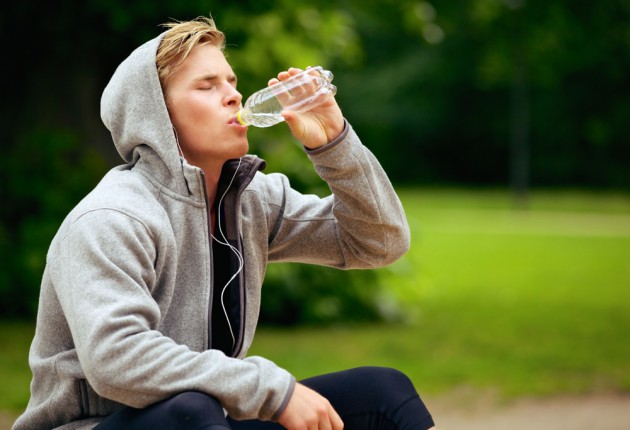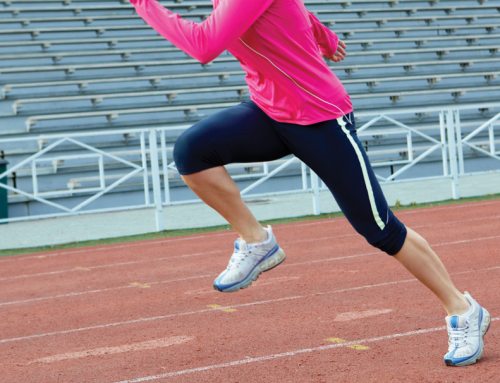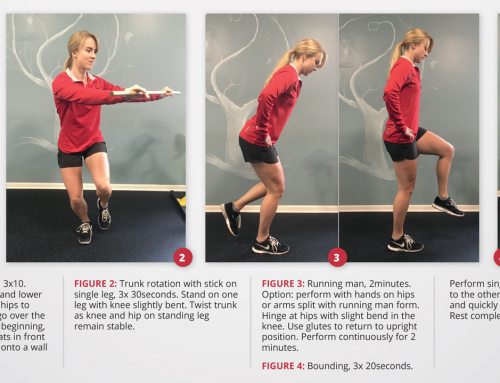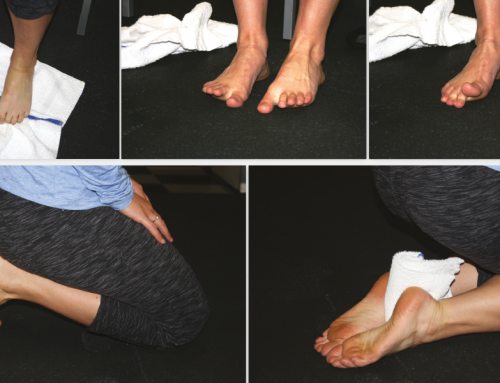
By Catherine Rainbow, MD
Most runners know to be vigilant in avoiding dehydration, which reduces endurance exercise performance, decreases time to exhaustion and increases heat storage. But overhydration can be just as dangerous for long-distance runners. Sprint or marathon, maintaining a balance is key to a successful run.
Dehydration
Dehydration in runners can come on suddenly or creep up slowly. Acute dehydration generally occurs in two to three hours and is most commonly seen in endurance athletes. Chronic dehydration is both less visible and more dangerous than acute, and usually results from several consecutive days of inadequate fluid intake.
Fluid loss as little as 1 to 2 percent of a runner’s total body weight can elevate core body temperature and have a negative impact on performance. Dehydration greater than 3 percent of body weight further disrupts balance and, because the production of sweat decreases, the risk of heat illness increases.
Remember, thirst is not a gentle reminder to hydrate, it’s a warning sign that severe dehydration has set in – the sensation of thirst typically starts at body weight loss of 5 percent or greater. At 6 to 10 percent loss of total body weight, the heart begins pumping less efficiently, leading to lower sweat production and reduced blood flow to the skin and muscles.
Be on the lookout for these indications of dehydration:
- Thirst
- Decreased skin elasticity
- Infrequent urination
- Headache
- Weakness
- A more than 1 percent decrease in body weight between pre- and post-exercise weight
Overhydration
Overhydration causes hyponatremia, which occurs when water consumption dilutes salt concentration in the body, creating a low salt level in the blood stream. This is most common in marathon participants who mainly drink water during competition.
Common complaints of overhydration are nausea, lightheadedness, malaise, lethargy, cramps and generally feeling “off.” If you’re a long-range runner, make sure to take in enough salty foods and beverages to keep your body balanced, and alternate water with sports drinks.
How to Stay Balanced
Don’t wait until you’ve begun exercising to start hydrating. By then, you’re already behind! Drink fluids four hours prior to the start of your activity and again at two hours out.
Water is an excellent source of fluid for activities lasting less than an hour. However, athletes exercising lasting longer than an hour should consume a sports drink with carbohydrates and electrolytes, to maintain fluid levels and electrolyte balance.
# # #
Dr. Catherine Rainbow is a sports medicine physician at Carolinas HealthCare System’s Sports Medicine & Injury Care. Sports Medicine & Injury Care offers next-day appointment scheduling. To schedule an appointment, call 704-512-3994 or visit CarolinasHealthCare.org/SportsCare.







